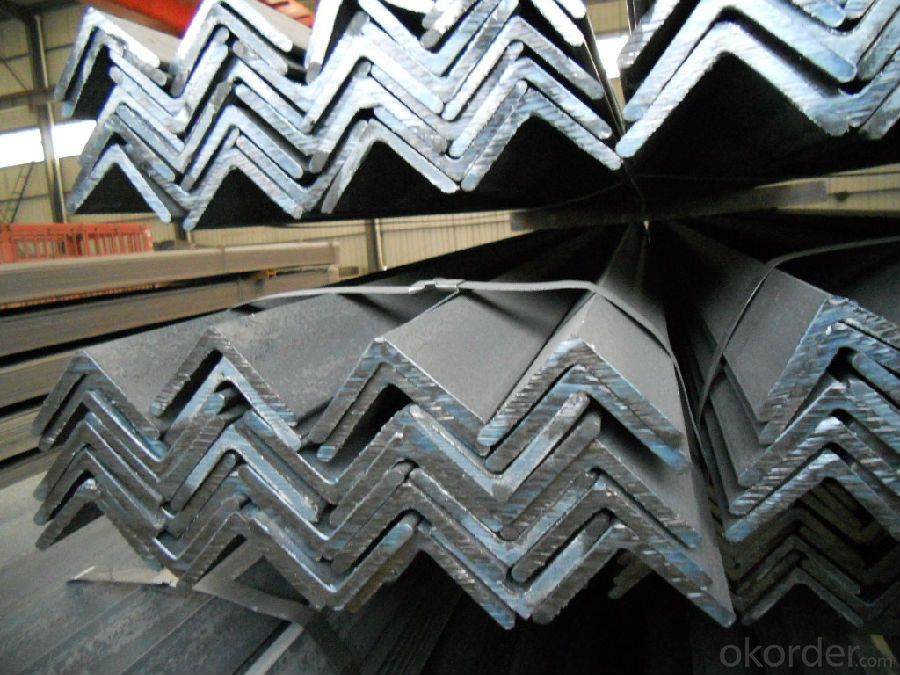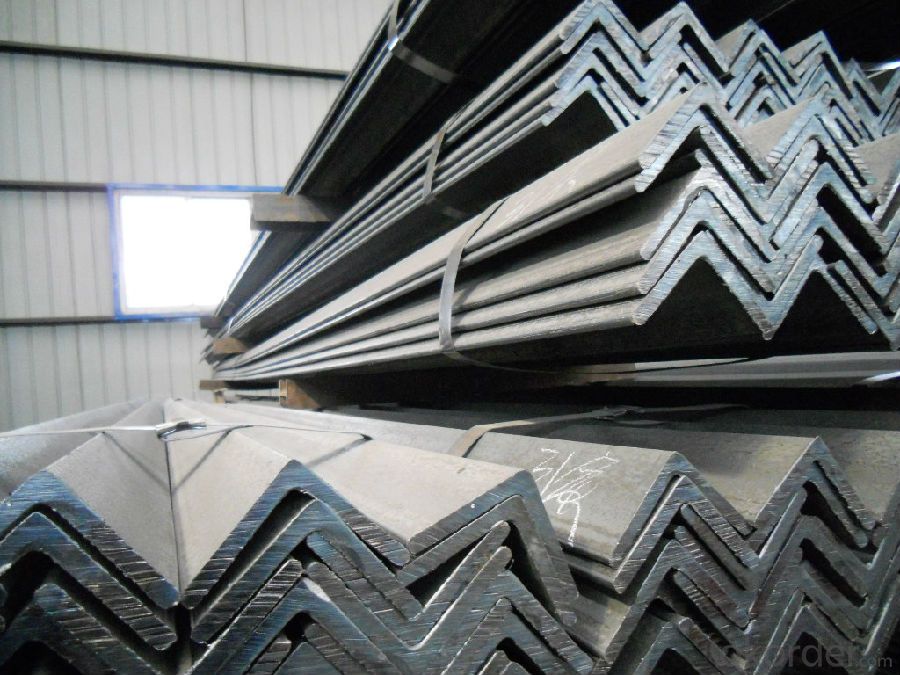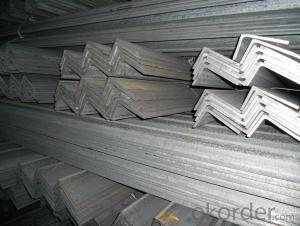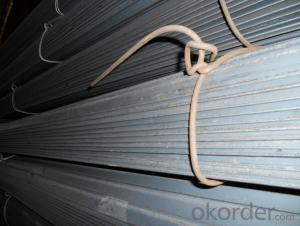Hot Rolled Steel High Qulity Angle Steel Unequal Steel Angle Made In China
- Loading Port:
- Tianjin
- Payment Terms:
- TT OR LC
- Min Order Qty:
- 50 m.t.
- Supply Capability:
- 30000 m.t./month
OKorder Service Pledge
OKorder Financial Service
You Might Also Like
Item specifice
Product Description:
OKorder is offering Hot Rolled Steel High Qulity Angle Steel Unequal Steel Angle Made In China at great prices with worldwide shipping. Our supplier is a world-class manufacturer of steel, with our products utilized the world over. OKorder annually supplies products to European, North American and Asian markets. We provide quotations within 24 hours of receiving an inquiry and guarantee competitive prices.
Product Applications:
Hot Rolled Steel High Qulity Angle Steel Unequal Steel Angle Made In China are ideal for structural applications and are widely used in the construction of buildings and bridges, and the manufacturing, petrochemical, and transportation industries.
Product Advantages:
OKorder's Hot Rolled Steel High Qulity Angle Steel Unequal Steel Angle Made In China are durable, strong, and resist corrosion.
Main Product Features:
· Premium quality
· Prompt delivery & seaworthy packing (30 days after receiving deposit)
· Corrosion resistance
· Can be recycled and reused
· Mill test certification
· Professional Service
· Competitive pricing
Product Specifications:
Sizes: 25mm-250mm | ||
a*t | ||
25*2.5-4.0 | 70*6.0-9.0 | 130*9.0-15 |
30*2.5-6.6 | 75*6.0-9.0 | 140*10-14 |
36*3.0-5.0 | 80*5.0-10 | 150*10-20 |
38*2.3-6.0 | 90*7.0-10 | 160*10-16 |
40*3.0-5.0 | 100*6.0-12 | 175*12-15 |
45*4.0-6.0 | 110*8.0-10 | 180*12-18 |
50*4.0-6.0 | 120*6.0-15 | 200*14-25 |
60*4.0-8.0 | 125*8.0-14 | 250*25 |
Usage & Applications of Angle Steel
According to the needs of different structures, Angle can compose to different force support component, and also can be the connections between components. It is widely used in various building structures and engineering structures such as roof beams, bridges, transmission towers, hoisting machinery and transport machinery, ships, industrial furnaces, reaction tower, container frame and warehouse etc.
Packaging & Delivery of Angle Steel
1. Packing: it is nude packed in bundles by steel wire rod
2. Bundle weight: not more than 3.5MT for bulk vessel; less than 3 MT for container load
3. Marks:
Color marking: There will be color marking on both end of the bundle for the cargo delivered by bulk vessel. That makes it easily to distinguish at the destination port.
Tag mark: there will be tag mark tied up on the bundles. The information usually including supplier logo and name, product name, made in China, shipping marks and other information request by the customer.
If loading by container the marking is not needed, but we will prepare it as customer request.
Production flow of Angle Steel
Material prepare (billet) —heat up—rough rolling—precision rolling—cooling—packing—storage and transportation
FAQ:
Q1: Why buy Materials & Equipment from OKorder.com?
A1: All products offered byOKorder.com are carefully selected from China's most reliable manufacturing enterprises. Through its ISO certifications, OKorder.com adheres to the highest standards and a commitment to supply chain safety and customer satisfaction.
Q2: How do we guarantee the quality of our products?
A2: We have established an advanced quality management system which conducts strict quality tests at every step, from raw materials to the final product. At the same time, we provide extensive follow-up service assurances as required.
Q3: How soon can we receive the product after purchase?
A3: Within three days of placing an order, we will begin production. The specific shipping date is dependent upon international and government factors, but is typically 7 to 10 workdays.
Q4: What makes stainless steel stainless?
A4: Stainless steel must contain at least 10.5 % chromium. It is this element that reacts with the oxygen in the air to form a complex chrome-oxide surface layer that is invisible but strong enough to prevent further oxygen from "staining" (rusting) the surface. Higher levels of chromium and the addition of other alloying elements such as nickel and molybdenum enhance this surface layer and improve the corrosion resistance of the stainless material.
Q5: Can stainless steel rust?
A5: Stainless does not "rust" as you think of regular steel rusting with a red oxide on the surface that flakes off. If you see red rust it is probably due to some iron particles that have contaminated the surface of the stainless steel and it is these iron particles that are rusting. Look at the source of the rusting and see if you can remove it from the surface.
Images:



- Q:How do you calculate the compression strength of a steel angle?
- To calculate the compression strength of a steel angle, you need to consider the cross-sectional area of the angle and the yield strength of the steel. The compression strength can be calculated by multiplying the cross-sectional area of the angle by the yield strength of the steel.
- Q:What is the standard tolerance for steel angles?
- The standard tolerance for steel angles can vary depending on the specific requirements and industry standards. However, in general, the standard tolerance for steel angles is typically specified in terms of the permissible variation in dimensions such as length, width, and thickness. These tolerances ensure that the angles meet the necessary specifications and can be used effectively in various applications. It is important to consult the relevant industry standards or specifications, such as those provided by organizations like the American Society for Testing and Materials (ASTM) or the American Institute of Steel Construction (AISC), to determine the specific tolerance requirements for steel angles in a particular context.
- Q:Can steel angles be used for outdoor applications?
- Yes, steel angles can be used for outdoor applications. Steel angles are typically made from weather-resistant materials such as stainless steel or galvanized steel, which makes them suitable for outdoor use. Their durability, strength, and resistance to corrosion make them a popular choice for various outdoor applications such as construction, fencing, and support structures.
- Q:What are the different methods of surface protection for steel angles?
- There are several methods available for surface protection of steel angles, including painting, galvanizing, powder coating, and applying protective coatings such as epoxy or polyurethane. Each method offers varying degrees of protection against corrosion and damage, depending on the specific requirements and environment in which the steel angles will be used.
- Q:Can steel angles be used for structural purposes?
- Yes, steel angles can be used for structural purposes. Steel angles are commonly used in construction for providing structural support and stability, particularly in framing applications where they can be used as beams, braces, or connectors. They offer excellent strength and durability, making them suitable for various structural applications in buildings, bridges, and other infrastructure projects.
- Q:Can steel angles be used as reinforcement in concrete slabs?
- Yes, steel angles can be used as reinforcement in concrete slabs. Steel angles, also known as L-shaped structural steel, are commonly used in construction for their strength and durability. When placed correctly within a concrete slab, steel angles can enhance its load-bearing capacity and help prevent cracks or structural failure. The angles provide additional strength and support to the concrete, especially in areas where heavy loads or concentrated forces are expected. By incorporating steel angles as reinforcement, the concrete slab becomes more resistant to bending, tension, and shearing forces, making it structurally sound and capable of withstanding higher loads. It is important to ensure proper design and placement of steel angles, following the guidelines and specifications provided by structural engineers, to ensure optimal reinforcement and performance of the concrete slab.
- Q:How do steel angles perform under seismic loads?
- Steel angles are commonly used in construction to provide structural support and reinforcement. When subjected to seismic loads, steel angles have been found to perform exceptionally well due to their inherent properties and design flexibility. One key advantage of steel angles is their high strength-to-weight ratio. This allows them to withstand the intense forces and movements generated during an earthquake without significant deformation or failure. The compact shape of the angle also helps distribute the load more efficiently, minimizing stress concentrations and potential weak points. Moreover, steel angles can be easily connected to other structural elements, providing a robust and reliable connection system. This is particularly important in seismic design, where the ability to transfer forces and accommodate movements is essential. To further enhance their performance under seismic loads, steel angles can be designed with specific features. For instance, the addition of stiffeners or bracing elements can increase their resistance to lateral forces, reducing the risk of buckling or collapse. Additionally, the use of thicker and stronger steel grades can improve their overall capacity to absorb and dissipate seismic energy. Various seismic design codes and standards provide guidelines and requirements for the use of steel angles in seismic-resistant structures. These codes consider factors such as the maximum allowable stress levels, detailing requirements for connections, and the overall structural behavior under seismic actions. In conclusion, steel angles perform admirably under seismic loads due to their high strength-to-weight ratio, efficient load distribution, and flexibility in design. When properly designed and implemented, steel angles can effectively resist the forces and movements generated during an earthquake, ensuring the structural integrity and safety of the building.
- Q:Can steel angles be used in stair construction?
- Yes, steel angles can be used in stair construction. Steel angles are commonly used as structural elements in staircases to provide support and stability. They can be used as stringers, which are the main load-bearing components of a staircase, or as brackets and supports for treads and handrails. Steel angles are known for their strength and durability, making them suitable for use in stair construction to ensure the safety and longevity of the staircase.
- Q:Can steel angles be used for architectural detailing?
- Yes, steel angles can be used for architectural detailing. They are commonly used in architectural designs to provide structural support, add aesthetic elements, and create interesting visual effects. Steel angles offer versatility in terms of design possibilities and can be used for various applications such as framing, cladding, and decorative accents in architectural projects.
- Q:How do steel angles contribute to the overall aesthetics of a building?
- Steel angles can contribute to the overall aesthetics of a building in several ways. Firstly, their clean lines and sharp edges can provide a modern and sleek look, adding a sense of contemporary style to the structure. The angular shape of steel angles can create visually interesting patterns and forms, adding depth and dimension to the building's exterior. Additionally, steel angles can be used creatively to enhance architectural features and create unique design elements. They can be integrated into the building's façade or used as decorative elements to highlight certain areas or create visual interest. For example, steel angles can be used to frame windows or doors, creating a striking contrast between the angular lines and the surrounding materials. Steel angles can also be used to create interesting shadows and reflections, especially when combined with other materials such as glass or concrete. The play of light and shadow can add a dynamic and ever-changing quality to the building's appearance, creating a visually captivating effect. Furthermore, steel angles are highly versatile and can be easily customized to fit the specific design requirements of a building. They can be cut, bent, and welded into various shapes and sizes, allowing architects and designers to explore endless possibilities in terms of form and composition. This flexibility in design allows for the creation of unique and visually appealing structures that stand out from the crowd. In conclusion, steel angles contribute to the overall aesthetics of a building by providing a modern and sleek look, creating visually interesting patterns and forms, enhancing architectural features, creating shadows and reflections, and offering endless design possibilities. Their versatility and ability to be customized make them a valuable tool for architects and designers to create visually captivating and aesthetically pleasing buildings.
1. Manufacturer Overview |
|
|---|---|
| Location | |
| Year Established | |
| Annual Output Value | |
| Main Markets | |
| Company Certifications | |
2. Manufacturer Certificates |
|
|---|---|
| a) Certification Name | |
| Range | |
| Reference | |
| Validity Period | |
3. Manufacturer Capability |
|
|---|---|
| a)Trade Capacity | |
| Nearest Port | |
| Export Percentage | |
| No.of Employees in Trade Department | |
| Language Spoken: | |
| b)Factory Information | |
| Factory Size: | |
| No. of Production Lines | |
| Contract Manufacturing | |
| Product Price Range | |
Send your message to us
Hot Rolled Steel High Qulity Angle Steel Unequal Steel Angle Made In China
- Loading Port:
- Tianjin
- Payment Terms:
- TT OR LC
- Min Order Qty:
- 50 m.t.
- Supply Capability:
- 30000 m.t./month
OKorder Service Pledge
OKorder Financial Service
Similar products
New products
Hot products
Related keywords



























